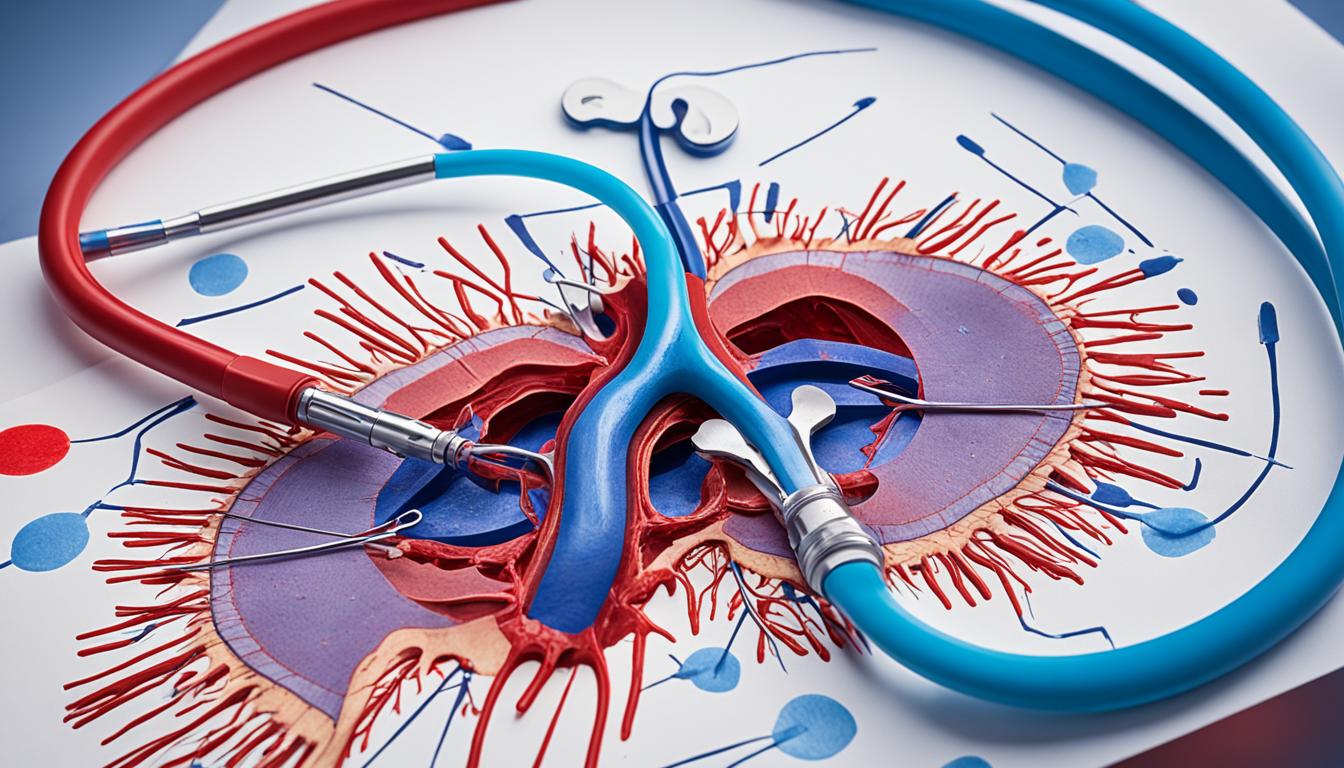Spontaneous coronary artery dissection, or SCAD, is rare but dangerous. It happens when a blood vessel’s inner layer in the heart tears. This tear blocks blood flow. SCAD mostly affects women in their 40s and 50s but can affect anyone, even at a young age.
SCAD is unique because it often hits those without classic heart disease risks. These include high blood pressure, diabetes, or high cholesterol.
Though SCAD’s exact cause is a mystery, researchers think it’s linked to hormones, blood vessel changes, and genetics. Diagnosing SCAD is hard and involves special tests. These include coronary angiography, intravascular ultrasound, and optical coherence tomography.
Doctors use these tests to see the artery tear clearly. They take detailed images inside the artery.
Treating SCAD focuses on opening the artery to let blood flow again. This can involve inserting a stent, heart surgery, or taking specific medications. Stem cell therapy is an exciting new area in SCAD treatment. It could lead to better outcomes and management in the long run.
Key Takeaways:
- SCAD is a rare condition where the inner layer of a blood vessel in the heart tears, leading to blockage of blood flow.
- It primarily affects women in their 40s and 50s, but can also occur in men and at any age.
- SCAD often affects individuals with no known risk factors for heart disease.
- Specialized tests such as coronary angiography, intravascular ultrasound, and optical coherence tomography are required for diagnosis.
- Treatment options include stenting, surgery, and medications to manage symptoms and reduce the risk of recurrence.
- Stem cell therapy shows promise in improving outcomes and long-term management for SCAD patients.
Symptoms and Diagnosis of SCAD
SCAD can bring several symptoms. These range from mild chest pain to feeling like you’re having a heart attack. Knowing these signs is key. If you experience them, seek medical help right away.
- Rapid heartbeat or fluttery feeling in the chest
- Chest pain
- Dizziness
- Nausea
- Pain in the arms, shoulders, or jaw
- Shortness of breath
- Sweating
- Unusual or extreme tiredness
Don’t overlook symptoms like these. SCAD’s diagnosis can be hard without special tests. Tests for SCAD may include:
- Coronary angiography: This procedure allows doctors to visualize the tear in the artery using contrast dye and X-rays.
- Intravascular ultrasound: It provides detailed images of the artery wall, aiding in diagnosing SCAD.
- Optical coherence tomography: This test offers high-resolution images of the artery’s interior, allowing for a more accurate diagnosis of SCAD.
SCAD might hit even healthy people not the usual heart attack risk group. Doctors need to think about SCAD more often. This careful approach helps get the right diagnosis. Then, the right treatment and care can start.
SCAD Symptoms and Diagnostic Tests
| SYMPTOMS | DIAGNOSTIC TESTS |
|---|---|
| Rapid heartbeat or fluttery feeling in the chest | Coronary angiography |
| Chest pain | Intravascular ultrasound |
| Dizziness | Optical coherence tomography |
| Nausea | |
| Pain in the arms, shoulders, or jaw | |
| Shortness of breath | |
| Sweating | |
| Unusual or extreme tiredness |
Treatment and Research for SCAD
Treating Spontaneous Coronary Artery Dissection (SCAD) focuses on improving heart blood flow. It aims to reduce future risks. The steps taken depend on how severe the condition is. Treatment might include a stent, artery surgery, or certain medicines.
Today, researchers are looking for more ways to treat SCAD. They want to fully understand it. Through genetic studies, scientists have found links between SCAD and certain genes. These genes include PHACTR1 and some related to connective tissue disorders.
Clinical registries now gather information on SCAD cases. This helps us learn more about how the condition shows up and how it’s managed. Additionally, support groups and stories from survivors offer comfort and community to those fighting SCAD. They share their experiences and help by providing emotional support.

